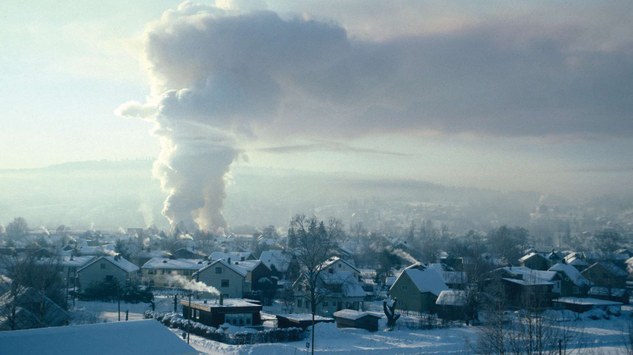Many Europeans still exposed to harmful air pollution
1 Dec 2015 11:51 AM
Air pollution is the single largest environmental health risk in Europe. It shortens people’s lifespan and contributes to serious illnesses such as heart disease, respiratory problems and cancer. A new report published yesterday by the European Environment Agency (EEA) estimates that air pollution continues to be responsible for more than 430 000 premature deaths in Europe.

Despite continuous improvements in recent decades, air pollution is still affecting the general health of Europeans, reducing their quality of life and life expectancy.
EEA Executive Director Hans Bruyninckx
The EEA report 'Air quality in Europe — 2015 report' examines the European population’s exposure to air pollutants and provides a snapshot of air quality based on data from official monitoring stations across Europe. It shows that most city dwellers continue to be exposed to air pollutants at levels deemed unsafe by the World Health Organization (WHO).
The most problematic pollutants affecting human health are particulate matter (PM), ground-level ozone (O3) and nitrogen dioxide (NO2). Health impact estimates associated with long-term exposure to PM2.5 show that this pollutant was responsible for 432 000 premature deaths in Europe in 2012, a level similar to that estimated in previous years. The estimated impacts of NO2 and O3 exposure were around 75 000 and 17 000 premature deaths respectively. The report also provides estimates of premature deaths at country level.
‘Despite continuous improvements in recent decades, air pollution is still affecting the general health of Europeans, reducing their quality of life and life expectancy,’ said EEA Executive Director Hans Bruyninckx. ‘It also has considerable economic impacts, increasing medical costs and reducing productivity through working days lost across the economy.’
Alongside health, air pollutants also have a significant harmful impact on plant life and ecosystems. These problems, including eutrophication caused by ammonia (NH3) and nitrogen oxides (NOx), as well as damage caused by O3 to plants, are still widespread across Europe.
Other key findings
- Particulate matter can cause or aggravate cardiovascular and lung diseases, heart attacks and arrhythmias. It can also cause cancer. In 2013, 87% of the urban population in the EU were exposed to PM2.5 concentrations that exceeded the WHO value set to protect human health. The air quality standard in the EU is less strict and only 9% were exposed to PM2.5 above the EU target value. The benefits of improving Europe’s air quality are clear – meeting the WHO air quality standard throughout the EU‑28 would lead to average PM2.5concentrations dropping by about one-third, resulting in 144 000 fewer premature deaths compared with the current situation. PM2.5 refers to particles with a diameter of 2.5 μm or less. Small particles can penetrate deeply into the lungs.
- Ozone exposure in cities remains very high – 98% of the EU-28 urban population were exposed to O3 concentrations above the WHO guideline value in 2013. Some 15% were exposed to concentrations above the (less strict) EU target value for O3. Ozone concentrations also damage agricultural crops, forests and plants by reducing their growth rates and yields. The long-term objective for the protection of vegetation from O3 was exceeded in 86% of the total EU-28 agricultural area.
- Nitrogen dioxide affects the respiratory system directly, but also contributes to the formation of PM and O3. In 2013, 9% of the urban population in the EU-28 were exposed to NO2 concentrations above the WHO and identical EU standards, with 93% of all exceedances occurring close to roads.
- Benzo(a)pyrene (BaP) is an organic pollutant that is carcinogenic. Typically formed as a result of wood burning, exposure to BaP pollution is widespread, in particular in central and eastern Europe. A quarter of the EU-28 urban population were exposed to BaP concentrations above the target value in 2013, and as much as 91% were exposed to BaP concentrations above the estimated reference level based on WHO risk figures.
- Sulphur dioxide (SO2) emissions have been reduced significantly over past decades as a result of EU legislation requiring the use of emissions scrubbing technology and lower sulphur content in fuels. There were only a few exceedances of the SO2 EU limit value in 2013.
- Carbon monoxide, benzene and heavy metal (arsenic, cadmium, nickel and lead) concentrations in outdoor air were generally low in the EU in 2013, with few exceedances of the respective limit and target values set by EU legislation.
Links